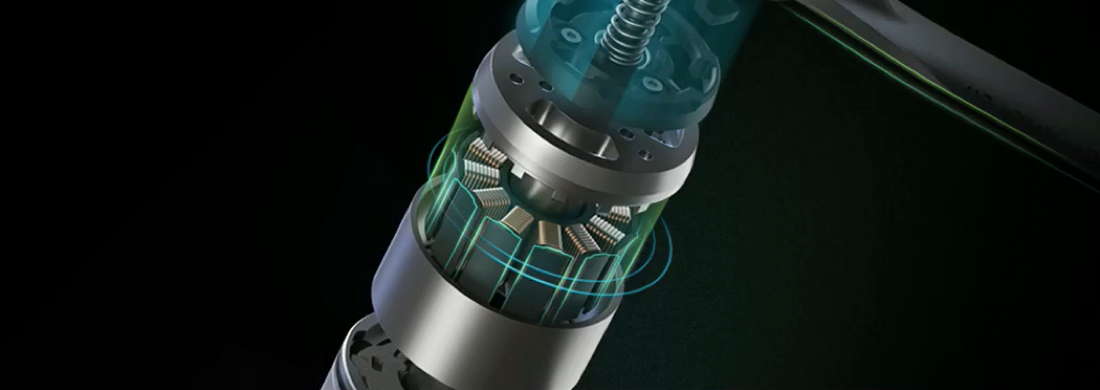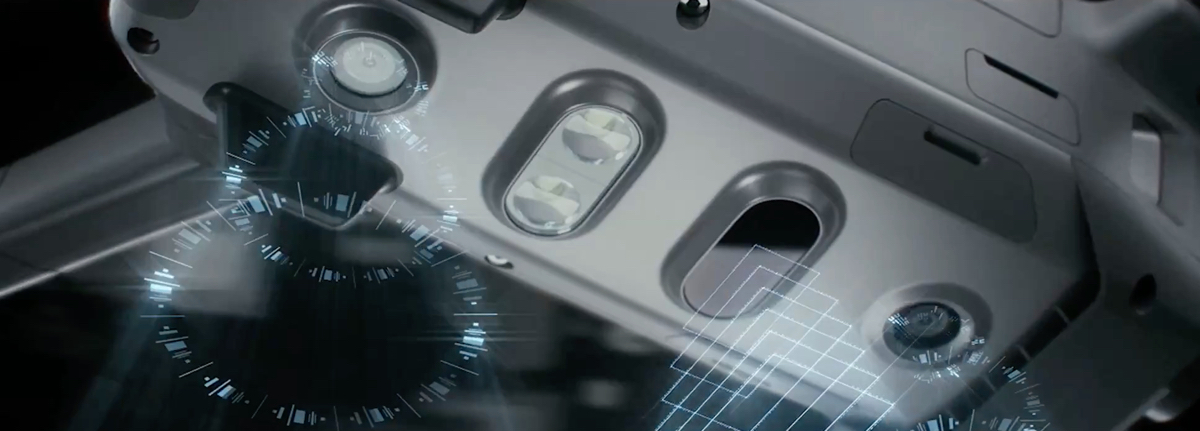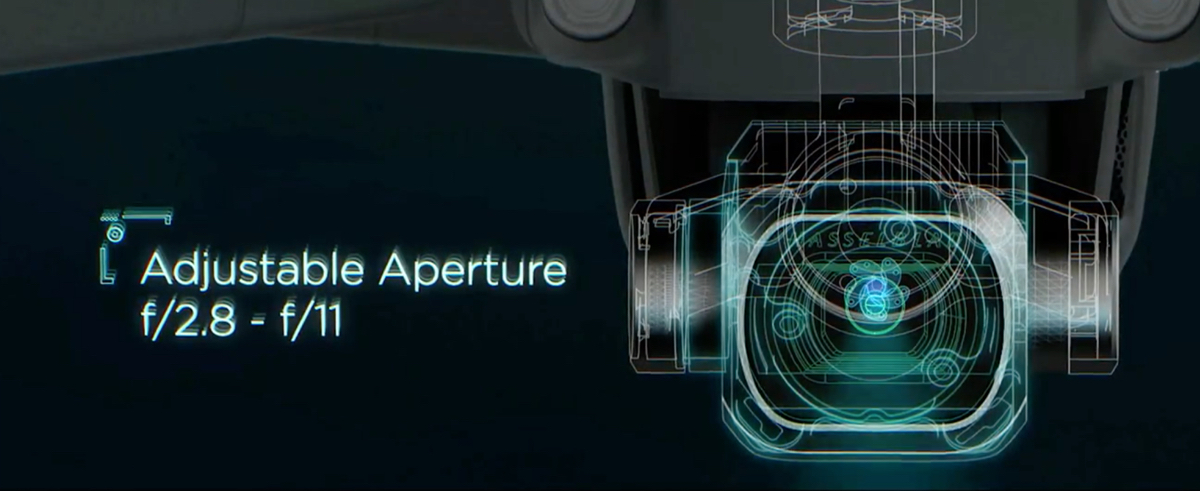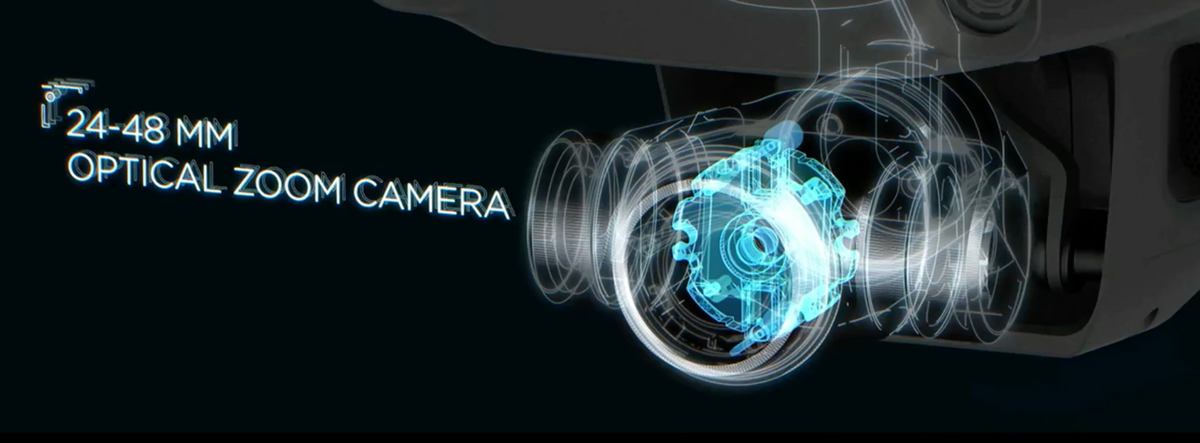First look at Mavic 2: fly longer, quieter, faster

Introduced in 2016, Mavic Pro has made a real revolution in the world of copters. He became the world's first folding drone that fits easily in a backpack or small bag. At the same time, it is not inferior in terms of functionality and characteristics to DJI flagship drones.
But, as we know, the company does not like and does not know how to stop at what has been achieved and regularly updates the lines of the copters. After almost two years (until the full two-year age, Mavic Pro remains just over a month), two modifications of the new drone were presented in New York: the Mavic 2 Pro and the Mavic 2 Zoom.
Appearance

')
For this parameter, no major changes have occurred. Before us is the long-familiar and well-proven Mavic Pro. Even the principle of "deployment" or bringing into operation remained the same. But the main changes lie in the details. The first thing you notice is a large number of sensors, new cameras, suspension, enlarged motors ... But more on that later. Run through the device.
This is not to say that the design has been heavily reworked, but some work on the bugs has been done accurately. The body is dominated by smooth lines and streamlined surfaces. Many corners are rounded, which has a positive impact on aerodynamics. Even if you pay attention to the rear rays of the drone, then you can see a smooth transition of the rack under the motor unit. Also, in addition to the front position lights, another pair of LEDs was added under the rear engines. So to determine at a great distance where the nose, and where the feed copter has become much easier.
Motors and propellers

Reworked and flight component. Low-noise folding propellers and new motors with a sinusoidal drive, which look larger than the previous model, are installed on both versions of Mavic 2. From here and new characteristics: the noise level has significantly decreased and the copter now develops the same speed as the Phantom 4 Pro / Adv - up to 72 km / h in sport mode! For a folding drone, this is an impressive result. And now you can not worry that during the shooting you disturb someone.
Sensor system

With each new product, DJI develops more and more advanced positioning systems. In the case of Mavic 2, the company tried to protect the drone from falls and collisions, in the literal sense, from all sides.
On the bottom panel of the device, we see several sensors at once: one wide infrared sensor that will help stabilize the copter in the dark or in conditions of poor (or complete absence) of the GPS signal and a pair of VIO scanners (visual inertial odometric sensors) for accurate navigation and protection from collisions. Such a system helps with landing and allows the hooker to determine the surface for landing at a 22-meter height. And the auxiliary light, located next to the infrared sensor, improves the accuracy of determining the surface in low light conditions.

Two stereoscopic cameras that had already become traditional were carried on the nose. But a pleasant surprise was the decision of the DJI to duplicate these sensors on the sides and rear of the copter, and also to place another infrared sensor on the back of the device. As a result, Mavic 2 became the first DJI copter, which has an obstacle detection system on all sides. And, of course, it will work in conjunction with the newest version of APAS and will provide a new level of flight safety.
Camera

The key differences between the two modifications of the new Mavik, of course, in the cameras. Mavic 2 Zoom got a 12 megapixel camera, a lens with a 2x optical zoom (24 mm - 48 mm), a 1 / 2.3 inch CMOS matrix, an ISO value from 100 to 3200 and 4K / 30p support (H codec. 265 / HEVC). And while shooting video in FHD, you can zoom in four times without losing quality. Working in conjunction with a 24-mm wide-angle lens, a 48-mm lens enhances the effect of parallax, and a hybrid autofocus, combining phase focusing and contrast, has increased accuracy and speed.
The model with the Pro index is equipped with a 20-megapixel camera with a Hasselblad high-aperture lens and an adjustable aperture (F2.8 - F11), a 1-inch CMOS-matrix with a 10-bit Dlog-M color profile, high ISO range (from 100 to 12800) and support for shooting in 4K / 30p (H.265 / HEVC codec).

The shutter speed of both models is the same: from 8 to 1/8000 seconds. And as a cherry on the cake, DJI offers two automatic functions: shooting with a trans-effect for Mavic 2 Zoom and creating a hyper-collapse effect for Mavic 2 Pro. Both modes are activated literally by pressing just one button and do not require complex post-processing.
And do not forget about the updated three-axis suspensions, which have become safer and more stable. The blurred picture is definitely not about Mavic 2.
Software functions

In addition to impressive features, the new copters support the updated ActiveTrack 2.0. From the previous version, the new mode differs in the definition of the subject by creating its 3D model, which allows it to more accurately track its movements. Moreover, now the copter can even predict the behavior of the object and continue to monitor it, even if it hides behind an obstacle for a while.
Redesigned algorithms and other well-known shooting modes: Point of Interest, Waypoint, Asteroid, Boomerang and others. In general terms: everything began to work more accurately, better and more spectacularly.
And for fans to do shots in super-high resolution, DJI prepared a surprise: the function of Super Resolution in Mavic 2 Zoom. Activate it in the settings and the copter will successively take 9 photos and automatically merge them into a huge 48-megapixel snapshot.
As in Mavic Air, in both versions Mavic 2 installed 8 GB of internal memory and added a slot for a microSD card of up to 128 GB.
Working hours
Thanks to the new engines and propellers, Mavic 2 will be able to stay in the air for 31 minutes! Thus, the kopter comes out on the same level as the professional Phantom 4 models not only in terms of camera quality but also in terms of operation time. At the same time, the battery capacity was increased by only 20 mAh. It was possible to achieve such an impressive flight time due to the recycled system of charge consumption and an increase in power consumption to 59.29 Wh.
Data transfer and console

Among other characteristics of the second Mavik, many were interested in the maximum image transmission distance. So, DJI has worked on this too: new drones support the OcuSync 2.0 wireless signal transfer system and can broadcast the image in resolution up to 1080p to the console, and the control will be carried out at a distance of up to 8 km. In addition, the remote supports two data transmission frequencies: 2.4 GHz and 5.8 GHz. It searches for the frequency with the least amount of interference and performs switching to maintain the clarity of the signal.
Dream come true?
DJI again managed to accomplish the impossible: to improve the copter, which was considered the benchmark in the world of drones. Mavic 2 embodies all the advanced technologies and is actually capable, if not changed, then set a new direction in the field of aerial photography.
Source: https://habr.com/ru/post/421103/
All Articles